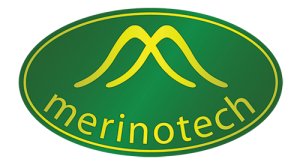Glossary of Terms
Breeding Objective: a statement of the traits (production characteristics) that a breeder wants to improve, and the emphasis to be given to each one.
Selection Index: an objective statement about where you want your flock to be in 10 years time i.e. lower micron by 1 micron while increasing clean fleece weight by 350g and maintaining bodyweight, to increase staple strength by 2 N/KTex and increase resistance to intestinal worm larval by 30%. Each trait must be heritable, definable and have an economic value.
Market Premium: the wool trade pays a premium for each micron decrease, the premium varies across years. The range of premiums over a 5-10 year rolling average is 3%, 8% or 12%.
Australian Sheep Breeding Value: the best estimate of a ram’s value as a parent compared with all the other rams in a tested group. It is the best estimate of how well a ram will ‘breed’ for a particular trait. The average of each measured trait from the tested group is zero. The ASBVs are calculated for each trait using the breeding objective values. The units are expressed in actual units, i.e. micron, kgs, % or newtons/Ktex.
Visual Sheep Scores: designed for ram breeders to class and select animals on one or any number of visually-assessed traits as part of their overall breeding objective.
CFW: Clean fleece weight, after the greasy wool is scoured.
FD: Fibre diameter or micron of the wool fibres.
HWT: Hogget body weight, 15-18 months old.
FDCV: Fibre diameter coefficient of variation.
SS: Staple strength, expressed in Newtons per Kilo Tex.
NLW: Number of lambs weaned per ewe each year.
WEC: Worm Egg Count. The degree of resistance to intestinal worm larval.
Index Value: combines all the tested traits into a single figure, according to the breeding objective of a ram breeder. A different selection index will have a different value for the same animal, as the weighting for each trait changes in the selection index.
Poll, Horn or Scur: the type of head bunting gear the ram is equipped with.
CTSE: Central Test Sire Evaluations. There are 14 sites across Australia where single rams are mated to a random selection of ewes that are run as a single group. The progeny are measured giving comparisons between rams. The use of link sires allows comparisons between sites to be made.
BLUP: Best Linear Unbiased Predictor. Computer software used to estimate progeny performance, that uses full pedigree records, linking progeny performance across years through common link sires. Relative Economic Values: the change in profit associated with one unit change in that trait, during an animals’ lifetime, assuming the value for all other traits doesn’t change.
Management Group: individual sheep can be compared only with other sheep that have run together under the same nutritional and management conditions. Where some of the whole drop have been classed or otherwise split and managed differently, those different subsections must be measured as distinct groups.
Side Samples: for accurate sampling it is essential to use the same location on every sheep to be measured, either mid-side or pin bone.
